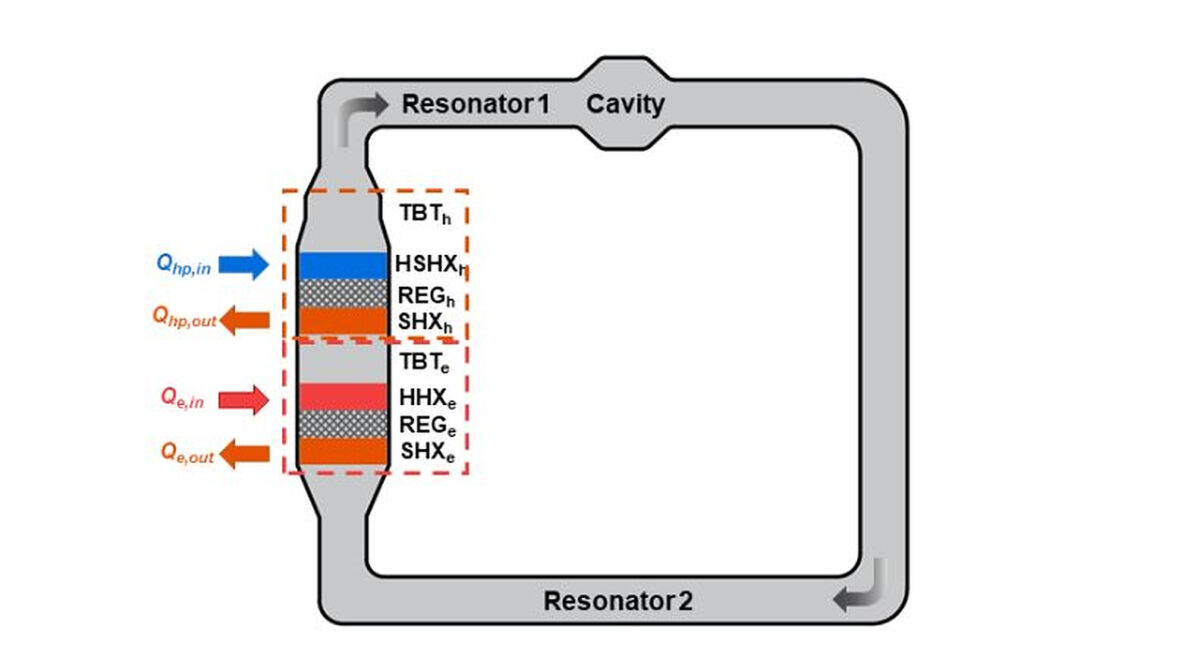Researchers led by the Chinese Academy of Sciences have designed a novel thermoacoustic heat pump system that they claim is able to use medium/low-grade heat for heating supply in domestic applications.
The system is designed to reach a heating capacity of 5.7 kW and an overall coefficient of performance (COP) of 1.40 at nominal conditions. It is made with an engine unit, a heat pump unit, and a gas resonator unit in a loop.
The engine consists of a heat-sink heat exchanger, a regenerator, a high-temperature heat exchanger, and a thermal buffer tube. The cooler unit is made with a heat-sink heat exchanger, a regenerator, a heat-source heat exchanger, and a thermal buffer tube.
The system is initially excited by the thermoacoustic oscillation and it uses the amplified acoustic power to drive the heat pump unit to pump heat from the heat source to the heat sink.
“The heat-source temperature varies between 260 K and 310 K, reflecting the variations in system performance over the seasons,” the scientists emphasized. “The heat-sink temperature varies between 298 K and 363 K, covering the range of applications from low-temperature underfloor space heating to the provision of domestic hot water.”
According to the research team, the heat pump is capable of offering stable COP values varying between 1.1 and 1.5 over most of the temperature range. “Especially in the typical domestic heating supply temperature range of 50-70 C, the proposed heat pump system can pump several kilowatts (1-11 kW) of heat from a heat source of 260 K to 310 K with remarkable efficiency,” it also noted.
The research team comprises academics from the Karlsruhe Institute of Technology in Germany and the Tsinghua University and Southeast University, which are both located in China. Its findings were published in the paper “A heat-driven thermoacoustic heat pump with a single direct-coupling configuration capable of utilizing medium/low-grade heat for domestic applications,” published in Energy Proceedings.
This content is protected by copyright and may not be reused. If you want to cooperate with us and would like to reuse some of our content, please contact: editors@pv-magazine.com.




1 comment
By submitting this form you agree to pv magazine using your data for the purposes of publishing your comment.
Your personal data will only be disclosed or otherwise transmitted to third parties for the purposes of spam filtering or if this is necessary for technical maintenance of the website. Any other transfer to third parties will not take place unless this is justified on the basis of applicable data protection regulations or if pv magazine is legally obliged to do so.
You may revoke this consent at any time with effect for the future, in which case your personal data will be deleted immediately. Otherwise, your data will be deleted if pv magazine has processed your request or the purpose of data storage is fulfilled.
Further information on data privacy can be found in our Data Protection Policy.